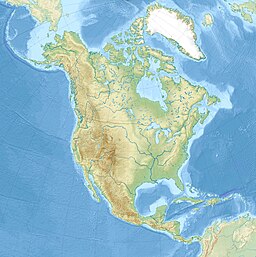
Back بحيرة أجاسيز Arabic Агасіс Byelorussian Агасис (езеро) Bulgarian Llac Agassiz Catalan Agassiz (jezero) Czech Agassizsee German Lago Agassiz Spanish Agassiz-jääjärvi Finnish Lac Agassiz French ימת אגאסי HE
| Lake Agassiz | |
|---|---|
 Map of the extent of Lake Agassiz in central North America, by 19th century geologist Warren Upham. The regions covered by the lake were significantly larger than shown here. | |
| Location | Manitoba, Ontario, and Saskatchewan in Canada; Minnesota and North Dakota in the U.S. |
| Coordinates | 51°N 97°W / 51°N 97°W |
| Lake type | proglacial lake |
| Etymology | Louis Agassiz |
| Primary inflows | Laurentide Ice Sheet |
| Primary outflows | Glacial River Warren, the Vermilion River, the Wanapitei River, and the Montreal River valley[1] |
| Basin countries | Canada, United States |
| First flooded | 12,875 years before present |
| Max. length | 475 mi (764 km)[1] |
| Max. width | 296 mi (476 km)[1] |
| Surface area | 260,000 km2 (100,000 sq mi)[1] |
| Surface elevation |
|
Lake Agassiz (/ˈæɡəsi/ AG-ə-see) was a large proglacial lake that existed in central North America during the late Pleistocene, fed by meltwater from the retreating Laurentide Ice Sheet at the end of the last glacial period. At its peak, the lake's area was larger than all of the modern Great Lakes combined.[2] It eventually drained into what is now Hudson Bay, leaving behind Lake Winnipeg, Lake Winnipegosis, Lake Manitoba, and Lake of the Woods.
First postulated in 1823 by William H. Keating,[3] it was named by Warren Upham in 1879 after Louis Agassiz, the then-recently deceased (1873) founder of glaciology, when Upham recognized that the lake was formed by glacial action.[4]
- ^ a b c d e Michalek, Michael J (2013). "Examining the progression and termination of Lake Agassiz" (PDF). Michigan State University. Archived from the original (PDF) on 5 May 2014. Retrieved 2 May 2014.
- ^ Cite error: The named reference
Perkinswas invoked but never defined (see the help page). - ^ Keating, William H. (1824). Narrative of an Expedition to the Source of St. Peter's River, Lake Winnepeek, Lake of the Woods, …. Vol. 2. Philadelphia, Pennsylvania, U.S.A.: H.C. Cary & I. Lea. p. 7. From p. 7: "In some places pebbles were as abundant as if we had been travelling upon the bed of some former river or lake; the mind endeavours in vain to establish limits to the vast expanse of water which certainly at some former day overflowed the whole of that country."
- ^ Upham, Warren (1880). The Geology of Central and Western Minnesota. A Preliminary Report. [From the General Report of Progress for the Year 1879.]. St. Paul, Minnesota, U.S.A.: The Pioneer Press Co. p. 18. From p. 18: "Because of its relation to the retreating continental ice-sheet it is proposed to call this Lake Agassiz, in memory of the first prominent advocate of the theory that the drift was produced by land-ice."
© MMXXIII Rich X Search. We shall prevail. All rights reserved. Rich X Search
